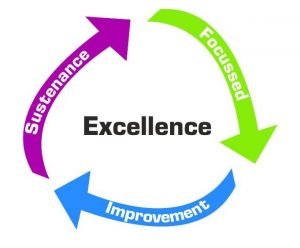1 |
JISHU HOZEN – Autonomous Maintenance Pillar WITH E&T |
| 1.1 | Training on JH Fundamentals |
| 1.2 | Training on JH Step-0 |
| 1.3 | Start of JH Step-0 (Know Your Machine) (Pictorial SOP’s) |
| 1.4 | Training on JH Step-01 & Introduction to Fuguai Management |
| 1.5 | Introduce JH step-01 Audit Sheet |
| 1.6 | Start Auditing JH Step-01 Machine wise |
| 1.7 | Training on JH Step-02 & Introduction to SOC & HTA Management |
| 1.8 | Introduce JH step-02 Audit Sheet |
| 1.9 | Start Auditing JH Step-02 Machine wise |
| 1.10 | Training on JH Step-03 & Introduction to CLRI Management |
| 1.11 | Introduce JH step-03 Audit Sheet |
| 1.12 | Start Auditing JH Step-03 Machine wise |
| 1.13 | Track monthly Reports |
2 |
Planned Maintenance – PM Pillar WITH E&T, SAFETY |
| 2.1 | Support & Guidance to ‘Autonomous Maintenance’ activities |
| 2.2 | Participate with operators in putting White & red tags |
| 2.3 | Attend red tag abnormalities |
| 2.4 | Evaluation of Equipment failure/ breakdown status & understand the situation. |
| 2.5 | Do why-why analysis or other analysis for repeated abnormalities, find & eliminate root cause. |
| 2.6 | Reverse deterioration & correct weaknesses. |
| 2.7 | Extended help to operators to prepare ‘Tentative Standards’ for cleaning, Lubrication & Inspection. |
| 2.8 | Build an ‘Information Management’ system. |
| 2.9 | Extend help to operators in education, on job training in general inspection & developing inspection procedures |
| 2.10 | Build a ‘Periodic Maintenance’ system. |
| 2.11 | Prepare standard documents for material selection, expense estimation, spare part management, work safety standards, Lubrication classification etc. |
| 2.12 | Build a ‘Predictive Maintenance’ system. |
| 2.13 | Introduce ‘Equipment Diagnostics’ technology |
| 2.14 | Evaluate the planned Maintenance system. |
| 2.15 | Compare, review total system & strengthen weak points. |
| 2.16 | Consolidate planned Maintenance, prepare Master Plan. |
3 |
Kobetsu Kaizen- Focussed Improvement Pillar(Impact on quality of the product) |
| 3.1 | Select & register topic |
| 3.2 | Form project teams |
| 3.3 | Plan activities – Gant Chart |
| 3.4 | Identify bottleneck process |
| 3.5 | Measure failures, defects & other losses |
| 3.6 | Use baseline to set targets |
| 3.7 | Thoroughlystudy and expose abnormalities |
| 3.8 | Restore deterioration & correct minor flaws |
| 3.9 | Establish basic equipment condition/ |
| 3.10 | Establish basic system condition |
| 3.11 | Stratify and analyze causes |
| 3.12 | Apply analytical techniques |
| 3.13 | Conduct experiments , apply specific technology, fabricate Prototypes |
| 3.14 | Make improvement proposals and prepare drawings/ Make improvement proposals and prepare SOPs |
| 3.15 | Compare cost effectiveness of alternate proposals and make budget |
| 3.16 | Check for possible adverse effects & disadvantages |
| 3.17 | Carry out improvement plan |
| 3.18 | Perform tests and trial runs |
| 3.19 | Provide instructions to work on improved equipment, operating conditions/ Systems |
| 3.20 | Evaluate results with time as improvement project goes on |
| 3.21 | Check whether targets have been achieved, If not start from step 3 again |
| 3.22 | Prepare inspection and work standards |
| 3.23 | Make drawings/SOPs and feed information to development management pillar |
| 3.24 | Train members to sustain the results |
4 |
Environment, Health & Safety |
| 4.1 | Identification of Near Miss |
| 4.2 | Rectification of Near Miss |
| 4.3 | All Co-workers Internally Motivated to Work Safety |
| 4.4 | Have the Necessary Safety Knowledge & Skills |
| 4.5 | Everyone Takes Charge of Their Own Safety |
| 4.6 | Employees Empowered to Take Safety Action |
- +91- 73072-47450 ,
- Ksingla@Leantycoon.com, Info@Leantycoon.com
Address
- SCF No -08,Ground Floor, Gillco Valley, Sector -04, Kharar, Punjab 140301
Quick Links
Contact
©2020 All Rights Are Reserved By Leantycoon Consulting Group.







